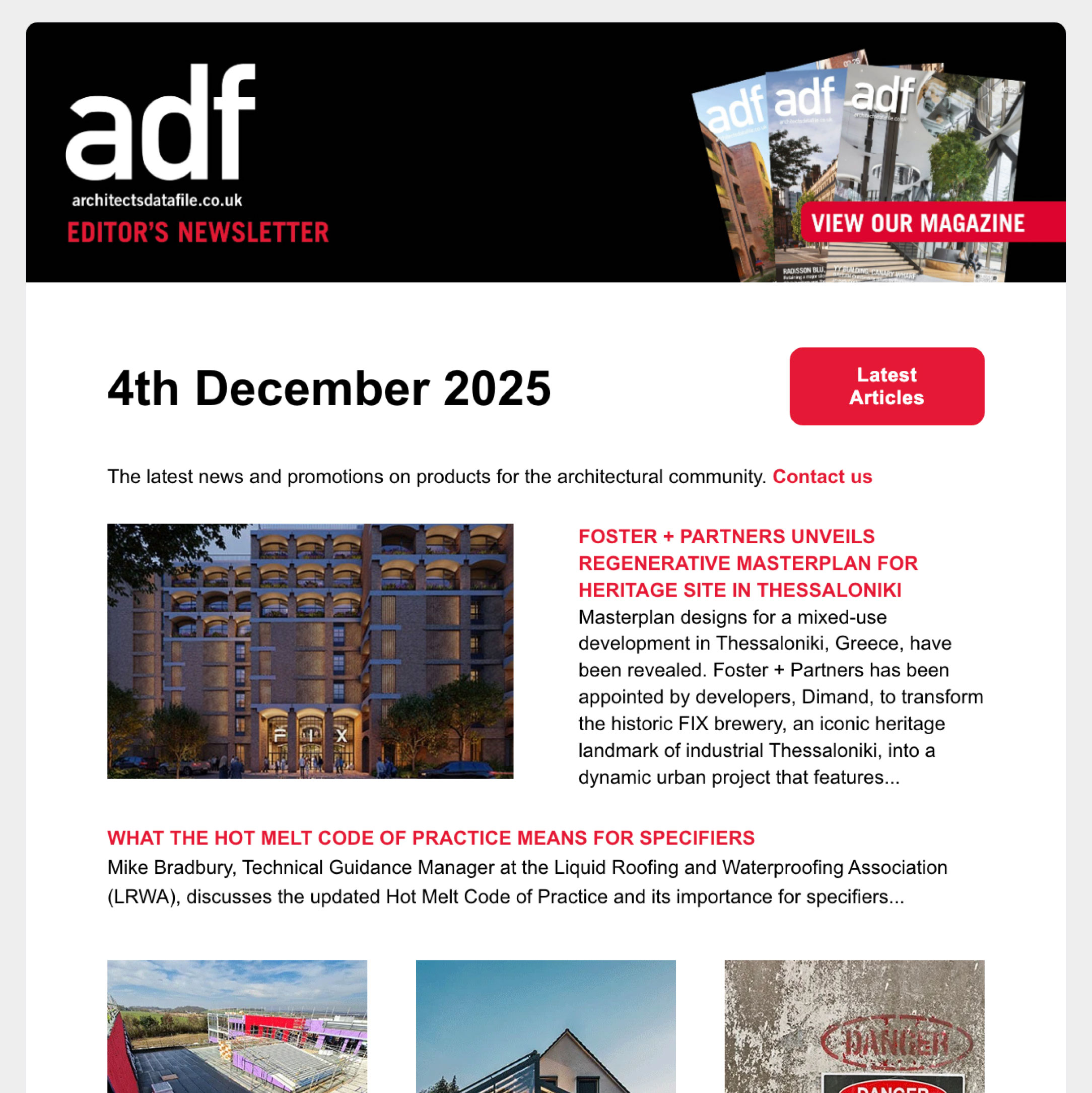As businesses look to entice employees back to underoccupied office space, well-designed, welcoming workspaces are growing in importance. George Emms, Specification Leader UK & Ireland – Wilsonart, explains how commercial interior designers can harness inspiration and integrate eye-catching surfaces into their projects.
Hybrid working arrangements have become commonplace in the modern working world. However, as businesses increasingly push for greater in-office presence from employees, there has been a noticeable shift away from remote work practices established post-pandemic.
An Ongoing Return
For example, Asda announced in late 2024 that workers at its Leeds and Leicester offices would need to spend at least three days at their desks from the new year onwards. These plans mirrors those of larger companies including McKinsey, Santander, Boots, ASOS and Amazon, with some going as far as making five office-based days mandatory. Indeed, according to the KPMG CEO Outlook Report, more than fourth fifths of UK CEOs expect to see this ‘full return’ policy back in place within three years.
Developers and property owners are well-placed to adapt to these emerging trends, especially with employers keen to offer points-of-difference. Creating a desirable, engaging environment where people want to spend the majority of their professional lives will play a key part in this push.
Furthermore, upgrading existing premises may help attract talent in the ever-competitive recruitment market. The expectations of Gen Z employees, many of whom entered the workforce post-pandemic, are of particular concern here. As a group that has only known hybrid working arrangements, this growing cohort may be less enthusiastic about RTO policies if the office environment is not of a sufficient standard, leading to a potential brain drain as they seek employment elsewhere.
Taking this into account, greater quality fittings and décor have grown in prominence as these stakeholders look to entice new and existing employees back to their buildings, with internal engineered surfaces particularly growing in prominence as a way to create added value.
Beneath the Surface
Commercial designers and specifiers can have a marked effect in these situations. Though the hospitality industry has long prioritised how a room’s aesthetics affect the visitor’s experience, these ideas are increasingly being brought to forefront in other premises, including offices. Indeed, with employees able to work from anywhere, businesses – and by extension, property owners and developers – must offer greater incentives to bring workers back into their buildings.
For some, this may involve offering food and drink stations within the office environment, appealing to the social dimension of office-based working. Yet hospitality’s influences can be found in other less obvious but nonetheless vital aspects of interior design, including wall, counter and door surfaces.
Tactility and Durability
Specifically, the effect of high-quality, eye-catching décor, including engineered surfaces, can provide a welcoming environment and help spark inspiration in the workforce. The quality of these surface solutions is crucial, especially in older buildings being renovated and repurposed to fit the needs of the modern, hybrid-working employee.
One factor that can be overlooked when sourcing surfaces is tactility. Commercial designs should offer a sensory experience, with a calming effect often prioritised in workplaces to facilitate respite from overstimulation. But this does not just involve visual appearance. Working surfaces, such as desks, kitchen countertops and breakout areas, present an opportunity to add texture and give employees the opportunity to notice and appreciate something that would otherwise be overlooked.
Surfaces with a silky-smooth texture may provide a calming effect that can reduce worker anxiety and stress while improving productivity. In turn, this can help create more welcoming spaces employees would be pleased to come back to on a daily basis, while emphasising a company’s people-first ethos. Used intelligently in areas such as communal spaces and meeting rooms, such finishes can prompt how employees can interact effectively in these zoned work environments.
If the overall aim is to highlight the quality of fittings throughout the office, prioritising leather, wood and stone textures, even with laminate surfaces, is also highly advisable. Taking this into account, the commercial designers involved in office renovation or building projects should ask their surface supplier whether this key aspect of panel specification is accounted for.
Yet this tactility should also not come at the cost of durability and functionality. When selecting surfaces, specifiers should be aware of the material options available that allow for premium, eye-catching designs. For example, Polyrey’s Touch finish is available in high pressure laminate, melamine faced chipboard and compact laminate panels, which brings depth to dark colours through a deep matte finish that absorbs light and demonstrates quality. It provides a soft, tactile and high-quality finish while also offering the durability required in high-traffic office spaces, with the added benefit of anti-fingerprint technology.
Ongoing Trends
But this does not mean the visual appeal of panelling should be downplayed – indeed, far from it. Decorative and technical panels are present in every office, from doors to lockers, countertops and worktops. The calming effect of well-designed, modern surfaces can help prompt employee experiences that may entice them back into the workplace. To best achieve this effect, it is advised that project stakeholders keep themselves informed on the latest surface design trends wherever possible.
Commercial designers faced with numerous other project considerations may simply not have the bandwidth to do this. On the other hand, they could have a very specific idea of what they want and wish for a finish to suit that vision. It is important that suppliers can cater to both extremes and all variations in between, especially for designers working across multiple projects of varying size, scope and function.
Taking this into account, project stakeholders should ask two major questions before engaging a supplier. Namely, do they have an in-house team looking after visual panel design, and can they design and provide personalised surface decors on an ad-hoc basis when requirpoled.
Meeting Moving Criteria
From these two questions, further considerations can be addressed. The first of these is how often the company’s design team updates their surface selections. Panel designs must strike a difficult balance between being modern but timeless. However, if suppliers do not update their portfolios frequently enough, their collections may end up looking dated or visually unappealing.
Seeking out providers such as Polyrey who continually updates collections available in its digital Signature Library is therefore crucial. By hosting a selection of up-to-date trends and moving its most popular choices to the main collection, Polyrey can give designers greater, market-tested reassurance that any specified surfaces meet contemporary tastes. Furthermore, working directly with suppliers’ internal design teams may provide project stakeholders with peace-of-mind that they can leverage third-party expertise over their panels’ technical and decorative properties. By making these processes simpler, commercial designers can bridge a potential knowledge gap and allow for more streamlined and credibly informed specification processes.
Customisation is the second key consideration. Any engineered surface supplier engaged for a commercial project should have the in-house capacity to provide bespoke images at the specifier’s request. It is also vital that these services, such as Polyrey’s Signature Creative, are available digitally to suit shifting demands, while outfitting an office and adapt finishes accordingly. Consequently, commercial designers should be aware of their supply chain’s capabilities in this area before work begins to ensure maximum flexibility throughout the project’s lifetime.
Engaging surface specialists who are able to offer these services may prove the difference in providing a visually appealing workspace that will attract employees back to the workplace. Such considerations will be crucial to boosting office occupancy rates in a world where hybridised working is becoming the norm. Commercial specifiers should therefore evaluate their supply chain and look to leverage its expertise if they are to provide visually appealing workspaces employees want to work in.
For more information, visit https://www.wilsonart.co.uk/polyrey



